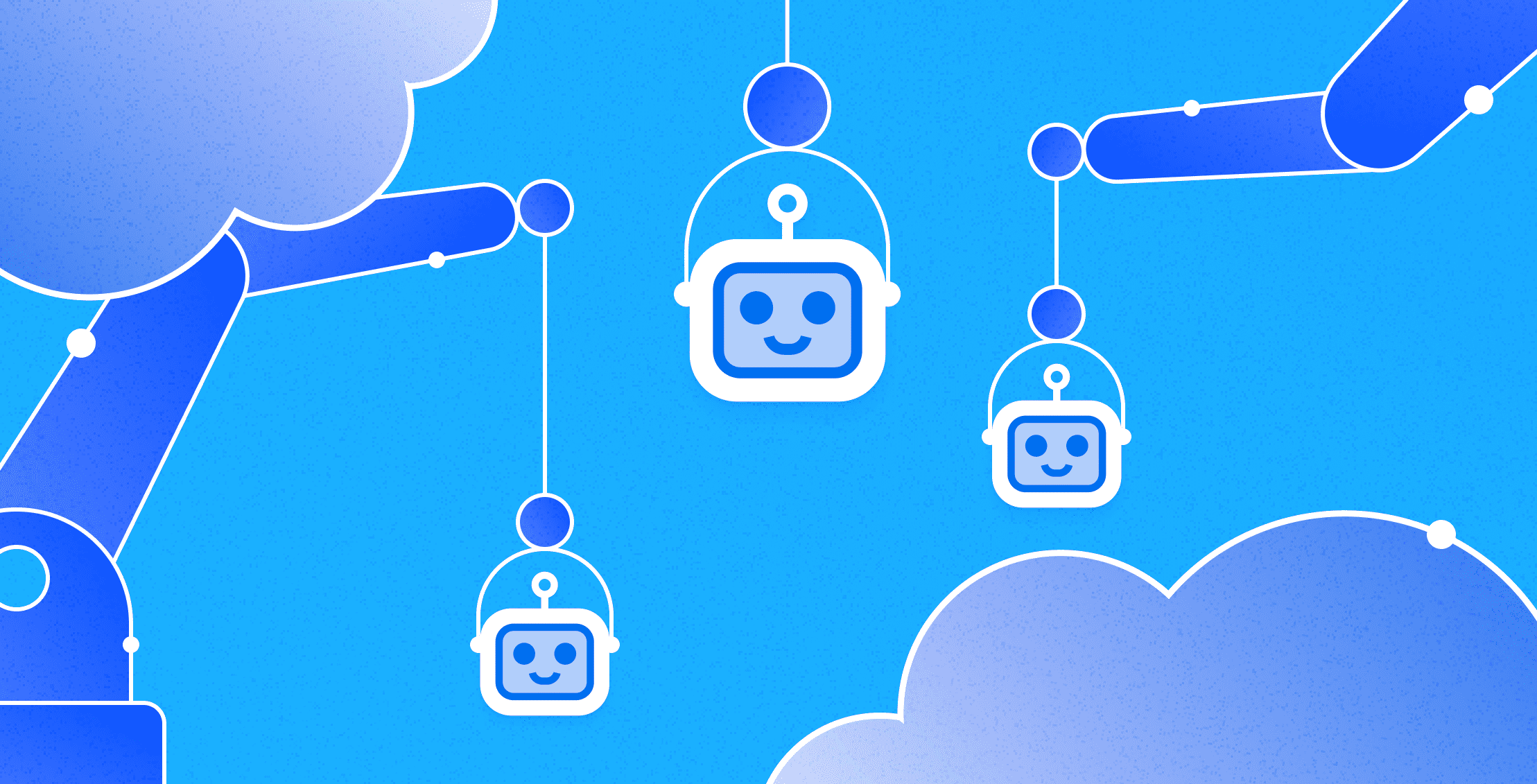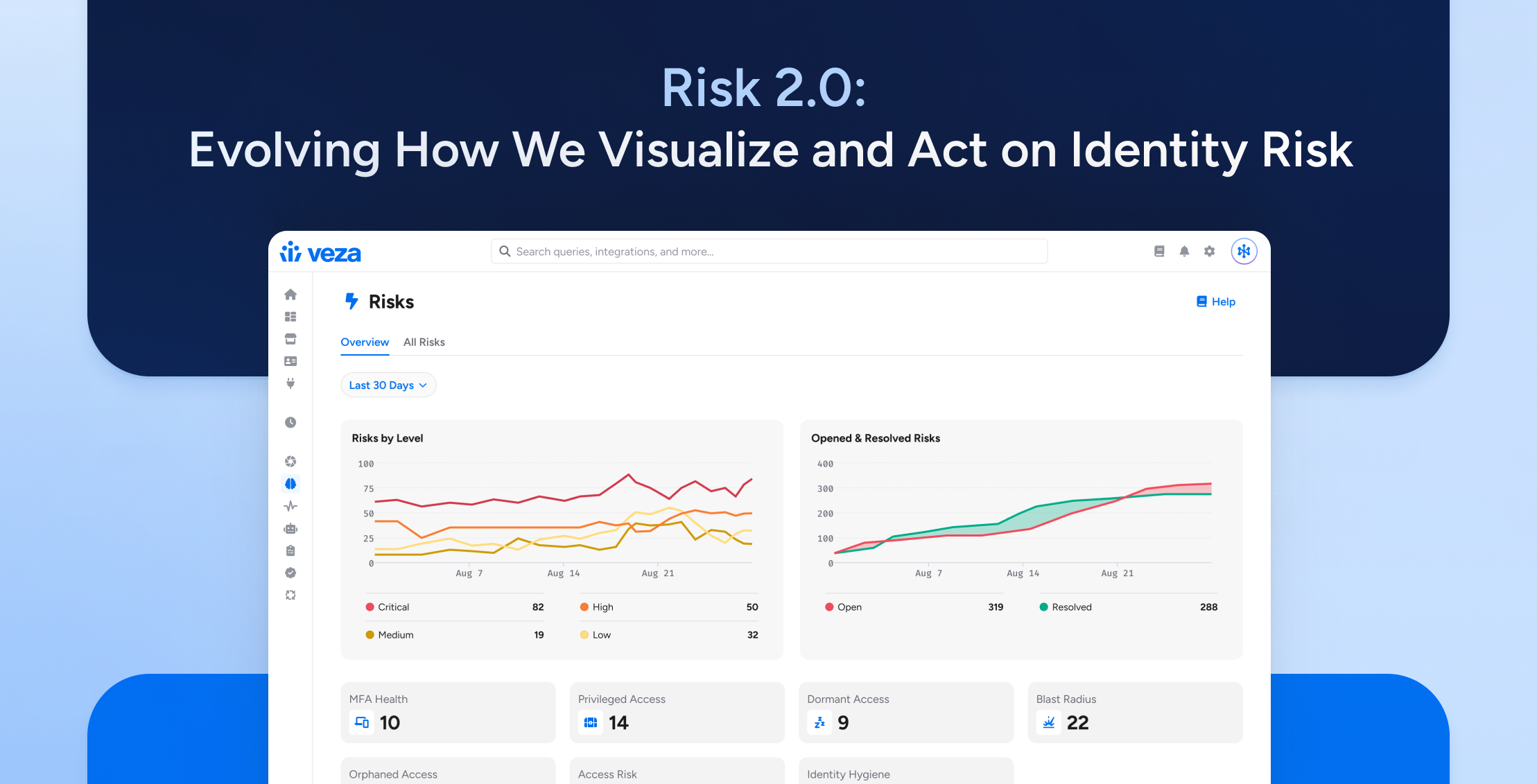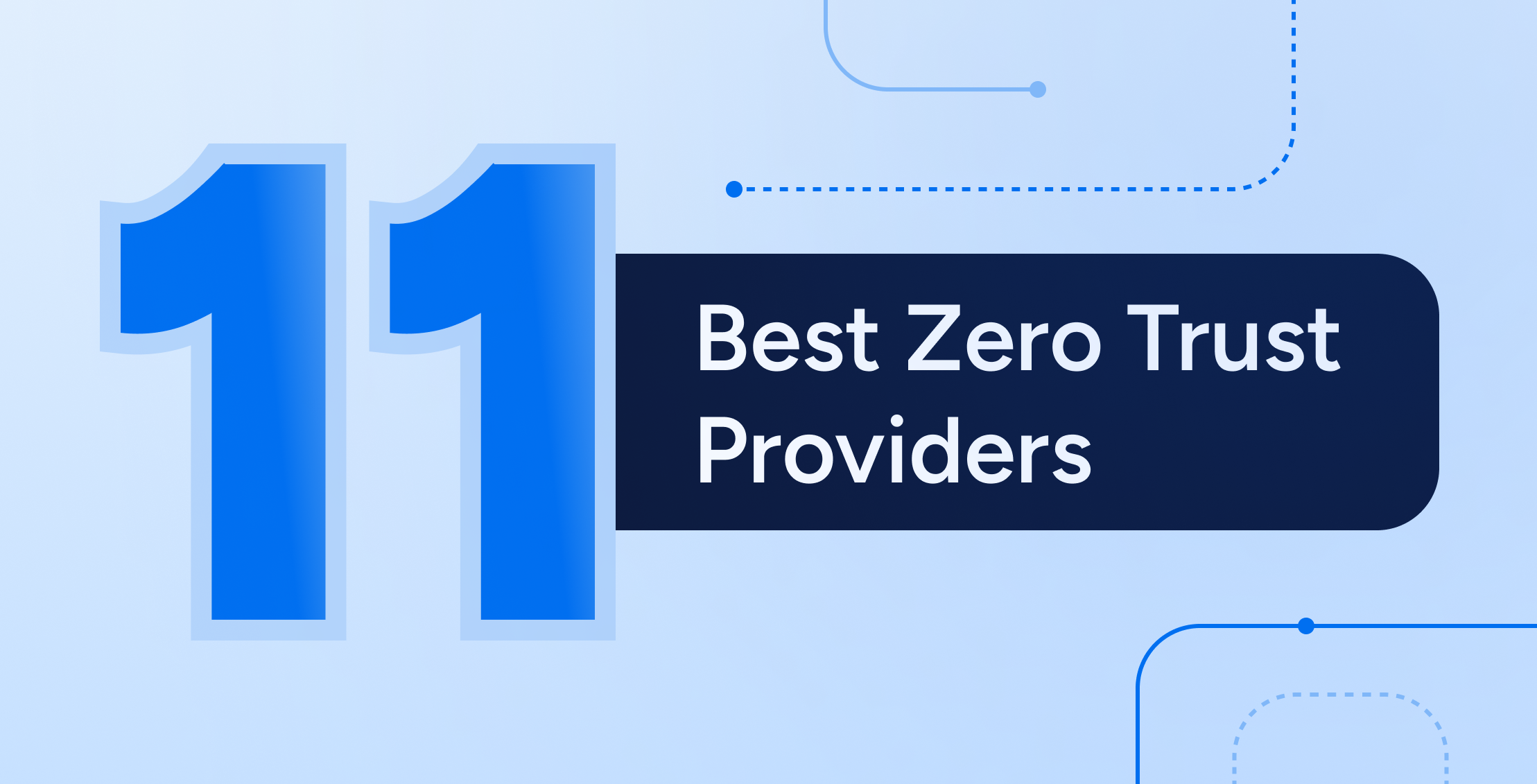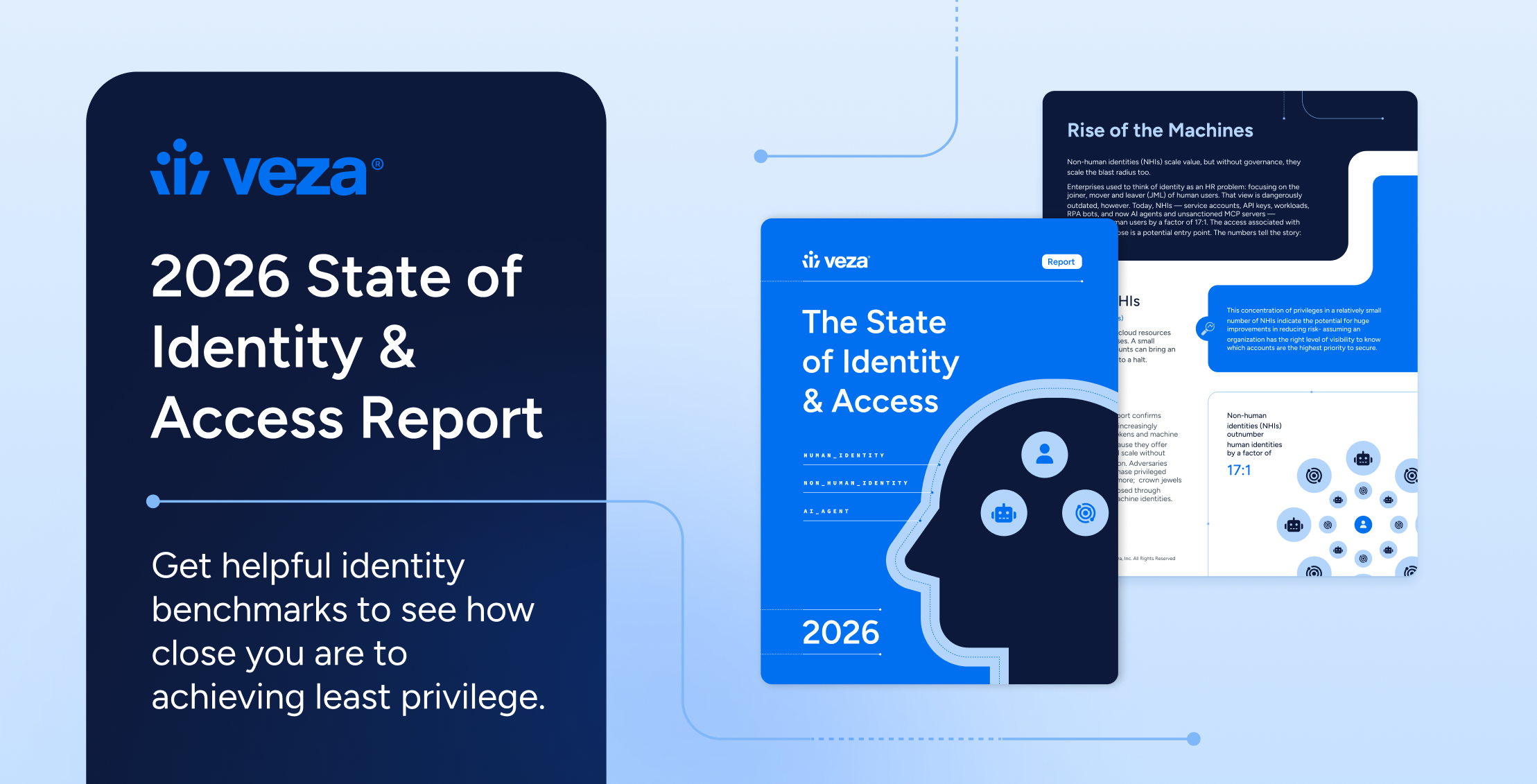
Machine identities are digital constructs used for machine-to-machine access and authentication. While machines can offer unbeatable automation and seamless operations, they can also lead to serious security risks.
Just as someone can pretend to be another person online, cybercriminals can also pretend to be machines. Sometimes, it’s even easier to do so. This makes machine identity management not just a technical routine but rather a strategic necessity that must be at the forefront of our cyber defenses.
This guide explains machine identity management and why it’s important, providing examples, challenges, and best practices. With this information, your organization can better understand how to protect and manage the digital identities of machines to boost your cybersecurity defenses against malicious actors, maintain the confidentiality of sensitive information, and address potential vulnerabilities in your cyber infrastructure.
What are machine identities?
Machine identities are digital IDs used for secure communication and verification between machines. They’re like online passports or credentials that allow machines to recognize and trust each other.
In many large organizations, machine identities can grow far more numerous than human employees—outnumbering them by a ratio of 17:1 according to our data. The root causes for this proliferation include the spread of various software applications and the use of microservice architectures (a way of designing software systems divided into small, independent services).
Examples of machine identities
Several types of Non-Human Identities (NHIs) fall under the umbrella of machine identities, including:
- Cloud identities and apps designed specifically for cloud environments.
- DevOps tools, CI/CD pipelines, and elements of the software supply chain.
- Automation tools and scripts that manage tasks without human intervention.
- SaaS integrations that connect different online services and applications.
Real-Life Example of a Machine Identity Compromise
In 2023, single sign-on and identity provider Okta disclosed that its customer support system had been compromised by attackers, who had stolen credentials which could be used, in turn, to breach Okta customers. Attackers were able to access the system via a “service account”, a type of non-human identity used for software integrations.
This breach underscores the key role machine identities play in modern infrastructure, and the vulnerabilities they can introduce if not properly managed. Ultimately, Okta’s experience is a reminder of the need to practice constant vigilance and update machine identity methods to protect sensitive information from unauthorized access.
Machine identity lifecycle
The machine identity lifecycle is about the steps needed to keep identities for machines secure and working correctly from start to finish.
Here’s a breakdown of what happens:
- Creation: This is when a new machine identity (like a service account or service principal) is made. This lets machines prove who they are and talk securely with each other.
- Deployment: After creating the identity, it is used in the systems, apps, or devices it needs to work with. This step ensures the new identity is recognized and can be used for safe conversations.
- Management: Once machine identities are active within your systems, it’s important to oversee their distribution and closely monitor their activities. This involves tracking where these identities are being used, ensuring they are only accessed by authorized machines or applications, and observing their actions. By monitoring the operations of these machine identities, you can detect unusual activities early, which is key to preventing security breaches and ensuring that everything runs smoothly without interference from malicious actors.
- Rotation and Renewal: Machine identities need regular updates or replacements, including rotating passwords, to maintain security. This practice ensures that outdated or potentially compromised IDs don’t linger in your system, where they could be exploited to gain unauthorized access. Keeping these identities current and changing passwords periodically reinforces your system’s defenses against cyber threats.
- Revocation and Decommissioning: When a machine identity is deemed unsafe or unnecessary, it should be promptly revoked, rendering it inactive to prevent misuse. This step is crucial for controlling access and reducing the potential impact—often called the “blast radius”—should the identity be compromised. Continuous monitoring should identify any dormant permissions associated with these identities. Removing these unused permissions is a critical step to minimize security risks, as it ensures that even if an account is compromised, the damage is limited.
By carefully managing each of these steps, organizations can ensure that their machine-to-machine conversations stay private and safe and guard against any unauthorized attempts to get access. It’s all about ensuring machine identities are up-to-date and have only the right access.
Why is it important to protect machine identities?
Just like people have IDs to prove who they are, machines in our digital world have their own identities. These machine identities are crucial because they help keep data safe and ensure machines talk to each other securely.
But if we don’t manage these identities well, it can lead to serious problems.
Security
Securing machine identities is important for defending against hackers. Traditional identity governance and administration (IGA) systems, which often rely on human resources and identity providers for information, tend to overlook these non-human identities. These systems aren’t designed to manage the sheer volume of NHIs, so they can’t effectively handle the complexity and scale that come with them.
As a result, NHIs are often set with broad permissions right from the start, and, more often than not, these permissions aren’t adjusted or checked again. Sometimes these are called “standing privileges”. This negligence makes machine identities a prime target for cybercriminals.
Additionally, when companies merge with or acquire other companies, they also take on a vast number of unknown machine identities, each with a set of unvetted permissions. This adds another layer of risk, as these unknown entities could potentially give attackers easy access to sensitive systems.
Attackers are well aware of these vulnerabilities and often exploit machine identities to launch significant attacks, including ransomware and data breaches. Since machines automatically connect and exchange data without human intervention, it’s easier for hackers to disguise their malicious attempts as legitimate machine communications.
Adding to this vulnerability is the fact that machine identities are typically not enrolled in multi-factor authentication (MFA) systems, making them easier to compromise compared to human identities. When these machine identities have more access than necessary—which is often the case—it’s like leaving the digital door wide open for anyone to enter.
Compliance
Another reason to keep machine identities in check is to follow the rules. Many laws and regulations require companies to protect their data properly. If a company’s machine identities are poorly managed, it could mean they’re breaking these rules without knowing it.
This can lead to fines or other penalties, which no company wants.
Operational efficiency
Finally, protecting machine identities helps everything run smoothly. When these identities are secure and well-managed, unexpected downtime or disruptions are less likely. Secure machine identities help prevent attacks that can shut down important systems.
Keeping things running without interruption is good for business—it means employees can work efficiently and customers are happy.
What is machine identity management?
Machine identity management is all about making sure the digital certificates that machines use to identify themselves are kept safe and up to date.
This process is key to protecting important data from being stolen or tampered with and keeping the overall cybersecurity of a system strong.
How does machine identity management work?
The process involves several steps, including creating a unique identity for each machine, like a digital certificate or key. It also includes updating them when they expire, replacing them if they are compromised, and removing them when they are no longer needed.
The system should also check these identities regularly to confirm that the machine trying to access data or communicate with another machine is who it says it is. This ensures that only trusted machines can access sensitive information and communicate securely within the network.
Elements of machine identity management
Effectively managing machine identities involves several key components focused on securing and controlling access to digital identities:
- Identity Verification Systems: These systems validate the identities of machines operating within a network. By verifying each machine’s identity, organizations can ensure that communications and data exchanges are legitimate and secure.
- Access Management: This includes setting up protocols to control which machines can access specific data or systems within an organization. Proper access management ensures that machines only have the necessary permissions to perform their intended functions, reducing the risk of unauthorized access.
- Role-Based Access Control (RBAC): Implementing RBAC helps define roles for various machines and assign permissions based on these roles. This practice ensures that machines have access rights tailored to their specific duties within the network, improving security by minimizing unnecessary access.
- Regular Audits and Compliance Checks: Regularly reviewing and auditing the use and security of machine identities helps maintain their integrity over time. This also ensures compliance with relevant laws and regulations, which can vary depending on the industry and type of data handled.
By integrating these practices into a cohesive machine identity management strategy, organizations can improve the security posture of their digital environments. This approach is critical not only for protecting against unauthorized access but also for maintaining the overall integrity and confidentiality of data exchanges in an increasingly interconnected digital landscape.
Challenges of Machine Identity Management
Managing machine identities sounds straightforward, but it’s filled with challenges. As technology evolves and our digital world grows, keeping track of and securing machine identities becomes more complex.
Machine proliferation
As companies grow and technology advances, the number of machines within an organization explodes. Each piece of hardware needs its identity, from servers and laptops to IoT devices and cloud instances. This explosion in the number of machine identities makes it tough to keep track of them all, let alone manage and secure them properly.
Connected devices
The IoT (Internet of Things) has brought a wave of new devices that are always online and communicating with each other. Everything from smart thermostats to industrial machinery is now connected to the internet, increasing the complexity of machine identity management. Each device needs a secure identity to communicate safely, adding to the already large pile of identities that need managing.
Unclear ownership
In many organizations, it’s not clear who has responsibility for managing machine identities. It could fall under the IT department, the security team, or even the developers and teams using the devices. Adding to this complexity, it’s often developers, not security professionals or identity and access management (IAM) teams, who initially set the permissions for these machine identities.
Developers are typically focused on getting things up and running, especially in the early stages of development when they’re working with test data and security isn’t the top priority. However, when the code moves to production, these permissions often go unchecked and aren’t revised. This can lead to machine identities that have more access than they need—a situation that has led to security breaches like in the case of Capital One.
Plus, a significant portion of machine identities are associated with third-party services, which means controlling the security of these credentials can be challenging. It’s a common scenario for companies to point to third-party services as the weakest link in the event of a security breach.
While this might sometimes seem like deflecting blame, the reality is that the security of these non-human identities, when managed by external parties, does pose a genuine risk.
Lack of automation
Managing machine identities manually is nearly impossible, especially as organizations grow. However, many companies haven’t yet adopted automated systems to handle this task. Without automation, it’s easy to miss when certificates need renewing or when an identity has been compromised, putting the entire network at risk.
Machine Identity Management Best Practices
Keeping your machine identities safe and properly managed is crucial for your organization’s cybersecurity. Here are some best practices to ensure your machine identities are well-protected and effectively managed:
1 – Keep proper documentation and continuously audit
Just like organizing personal documents is essential, documenting all machine identities in your organization is equally important. This involves maintaining a detailed log of each identity, including its creation date, purpose, and scheduled updates or renewals. However, since machine identities are not always manually created by humans, it’s important to implement a system that can automatically discover and continuously monitor these identities.
Incorporating continuous auditing and discovery into your documentation process ensures that all machine identities are accounted for and properly managed, even those that are dynamically created by systems without direct human intervention. This automated approach not only helps keep the records up-to-date but also improves the overall organization and ease of management for machine identities over time.
2 – Prevent excessive & ungoverned permissions
It’s essential to carefully manage the permissions given to machine identities to make sure they have exactly what they need—no more, no less. That’s because overly broad permissions can elevate security risks, and some machine identities, particularly those involved in DevOps and CI/CD processes, are high-stakes or Tier 0.
These powerful tools can write source code directly to production environments, essentially holding the “nuclear codes” for your digital infrastructure. This makes them prime targets for attackers looking to inject ransomware or other malicious code.
To mitigate these risks, your organization should regularly review and refine the user permissions of all service accounts, with a keen eye on identifying and correcting instances where access levels exceed what’s necessary for their function.
The principle of least privilege is all about giving machines only the access they need to perform their tasks and nothing more. This way, if a machine identity does get compromised, the damage is limited because the attacker can’t access more than what the identity was specifically allowed to do.
It’s equally important to proactively identify and deactivate machine identities that are no longer in use and the dormant permissions they might have. Unused identities can become vulnerabilities, lying dormant until exploited by cybercriminals and a backdoor into your systems.
3 – Conduct regular audits
Regularly checking your machine identities and their access rights is key to keeping your digital environment secure. Just like you’d review the roles and permissions of your team members, it’s important to include machine identities in these reviews too. By doing so, the people in charge of resources can see and manage access for both humans and machines side by side.
This integrated approach ensures that all parts of your system—people and machines alike—are only able to access what they need, keeping everything running smoothly and safely. Regular audits are a great way to make sure this process stays on track and that your approach to managing identities is secure and up-to-date.
Monitor your machine identities constantly to spot any unusual activity or potential security threats quickly. Continuous monitoring helps catch problems early before they can cause harm.
4 – Adhere to regulatory requirements
Different industries have different rules about managing and protecting data. Make sure your management of machine identities follows these rules to avoid legal troubles. Keeping up with regulations ensures your organization stays on the right side of the law.
The Future of Machine Identity Management
Looking ahead, managing machine identities is becoming as important as (or perhaps even more than) managing human identities. Hackers are actively exploiting weaknesses in machine identities just as they do with human ones. It’s time for organizations to learn this lesson, and Veza is here to lead the way in managing both machine and human identities with equal importance.
Veza’s Access Platform revolutionizes access intelligence and reviews, uncovering the true picture of permissions and entitlements across all systems (cloud, SaaS, on-premise, databases). Importantly, it does this for both human and machine identities.
Traditional IGA tools, designed for an era where human access was paramount, tend to fall short when it comes to machines. They rely on HR apps and identity providers as the source of truth, which simply doesn’t account for non-human entities. Their relational database architectures struggle with the scale of permissions, especially the large number granted to machine identities.
Plus, traditional security measures like multi-factor authentication (MFA) aren’t applicable to machine identities. There’s no human to remember a password or to input it, which can lead to storing machine credentials in potentially vulnerable ways—like being hardcoded in source code and possibly exposed in a public repository. This unfortunate reality underscores the need for a solution like Veza’s Access Platform to understand and navigate the complexities of both worlds.
Veza offers a unified platform that provides complete visibility and intelligent analysis of effective permissions for all human and non-human identities. It helps organizations regularly assess the access entitlements of every identity through automated reviews, so they can identify and correct overprivileged or misconfigured accounts.
This approach not only strengthens security but also improves regulatory compliance and operational efficiency, offering a comprehensive solution designed to meet the challenges of modern machine identity management. With Veza, organizations ensure every identity is properly managed, protecting their digital environment against today’s evolving threats.
Learn more about how Veza makes it possible to handle an overwhelming number of machine identities–a number that will only be in the years ahead.





